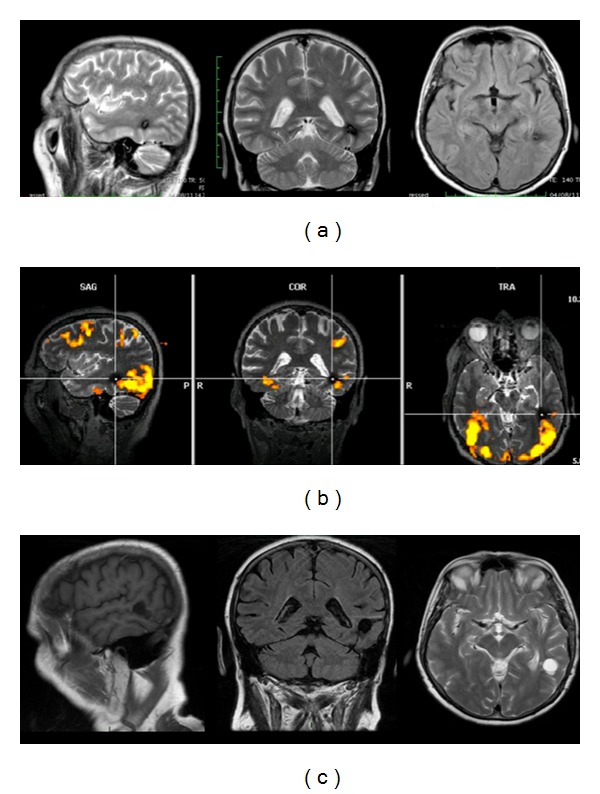Figure 2.

(a) Preoperative MRI sequences (sagittal T2, coronal T2, and axial Flair) showing a 1 cm mixed-intensity lesion with a hypointense rim into the subcortical region of the middle temporalgyrus (MTG) directly in contact to the stems and/or terminations of the subcortical language pathways of this region (i.e., inferior fronto-occipital fasciculus, arcuate fasciculus, and indirect posterior component of superior longitudinal fascicle). (b) The preoperative 4T f-MRI (MR Scanner MedSpec, Bruker) showing the main activation during language task of the posterior temporal lobe on sagittal, coronal, and axial planes. The f-MRI demonstrated significant activations at the level of the posterior thirds of inferior temporal gyrus (ITG) and MTG in the BA 37 and in the occipital laterobasal cortex in the BA 19. No activations were detected at the level of the classical Wernicke's area at the level of the posterior thirds of the MTG and superior temporal gyrus (STG) and perisuperior temporal sulcus (STS) in the BA 22. (c) The postoperative MR sequences (sagittal T1, coronal Flair, and axial T2) demonstrated the complete resection of the cavernous angiomas (CA) and of the perilesional hemosiderin gliotic rim. CA: cavernous angiomas; ITG: inferior temporal gyrus; MTG: middle temporal gyrus; STG: superior temporal gyrus; STS: superior temporal sulcus.
